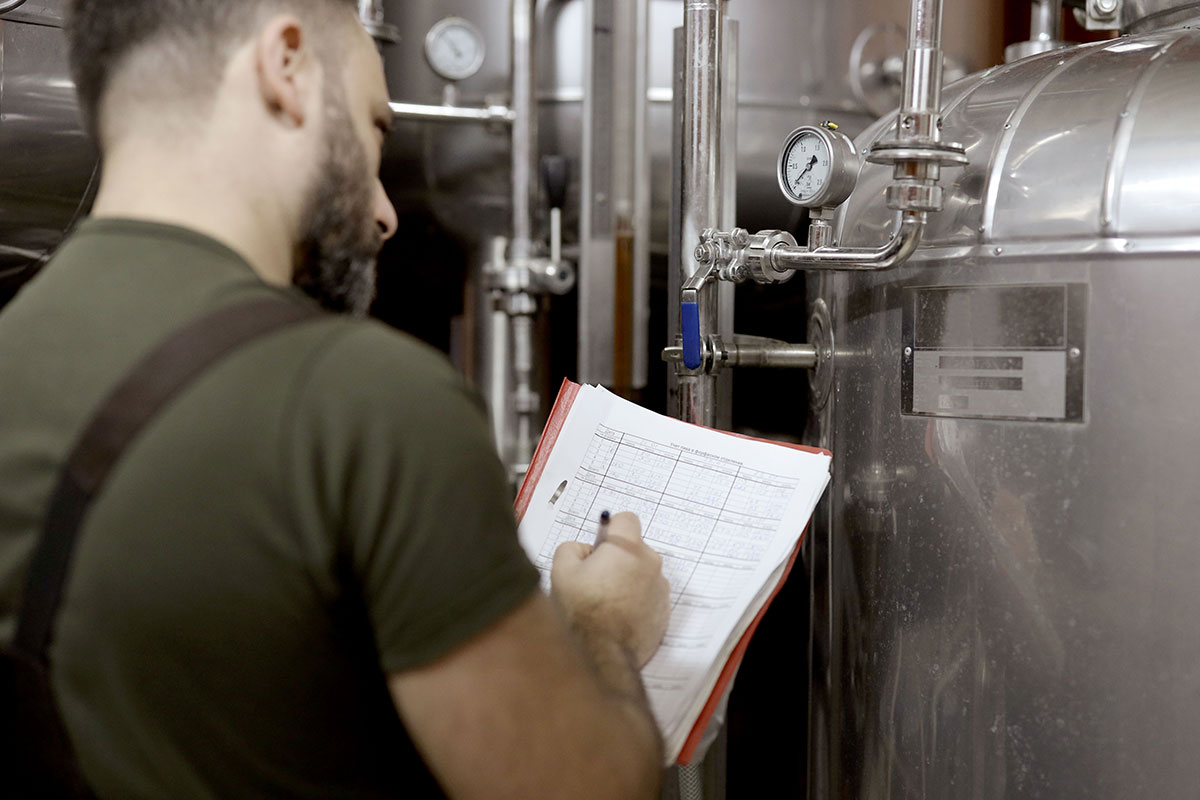Understanding the H-2B Visa Program: A Guide for U.S. Business Owners

If your business is busier during certain times of the year than others, getting enough hands on deck to serve your customers and help you grow during those peak seasons can be a challenge. For U.S. companies that face seasonal or peak-load demands, the H-2B visa program can be a great tool to look abroad for A-players to supplement your team.
But if you are new to H-2Bs, this visa program can be intimidating. With multiple steps involving up to four government agencies and a random lottery somewhere in between, the process seems almost designed to confuse.
Never fear! We’re here to make it as simple and painless as possible, so you can focus on running your business and deliver value and quality to your customers.
What is the H-2B Visa Program?
The H-2B visa program allows U.S. employers to bring foreign workers to the United States for temporary jobs in any occupation except agriculture. Employers may sponsor H-2B workers on a recurring basis for periods of up to 10 months or on a one-time basis for up to 3 years.
Almost any type of employee can qualify – from unskilled, entry-level laborers to experienced A-players at the top of their field – so long as the job opening is temporary and non-agricultural. This visa is particularly useful for businesses that have a significant increase in customer demand during specific seasons or periods, like landscapers and beach resorts during the summer or ski resorts during winter.
Employees hired under the H-2B visa program will initially receive visas for up to a year but can extend their H-2B status in the United States for up to three years if they receive job offers from other H-2B employers while they are here.
Some Unique Features and Perks
Some unique features help H-2Bs stand out among other U.S. employment-based visa options:
Most steps in the process are filed as “blanket” or group applications that can sponsor many workers at once. The economies of scale that this allows can significantly reduce sponsorship costs per employee.
Unlike most U.S. employment-based visas, the H-2B process focuses on the employer’s staffing needs rather than the individual employee. This means employers can use H-2B visas to hire unskilled workers for entry-level positions and not just exceptional candidates for white-collar jobs.

Who is the H-2B Visa Program For?
The H-2B visa is designed for U.S. businesses that need temporary workers for positions that are not agricultural. This includes industries like hospitality, landscaping, construction, manufacturing, retail, and many others. The key requirement is that the employer’s need must be temporary. This can mean:
Seasonal Need: For employers who staff a position only during certain times of year that are tied to predictable, recurring patterns or events.
For example: Beach or ski resorts whose hiring follows weather seasons. Athletic teams or venues (sporting seasons). Fishing boats or hunting lodges (licensing seasons). Christmas-tree lots and pumpkin patches (holiday seasons).
Peak-load Need: For employers who need extra help to supplement their regular workforce during busy or peak seasons or periods.
For example: Retail stores during the holiday season. Tourist attractions during holiday weekends.
Intermittent Need: For employers who need help during short-term periods that are occasional, irregular, or unpredictable.
Example: Businesses whose production or sales spikes when a new product is designed or released. Developers or contractors whose needs ebb and flow with their projects.
One-time Occurrence: A situation where the employer has not employed workers for the same job in the past and will not need them in the future.
Example: Professional couples who need a full-time nanny or other childcare worker only until their child is old enough for school. Businesses hired for a one-in-a-lifetime mega-project.
Key Requirements
- Temporary Need: The employer must demonstrate that it needs the H-2B workers only on a temporary basis, according to one of the four categories discussed above.
- Genuine Effort to Hire U.S. Workers: Before applying for H-2B visas, the employer must prove it has made a genuine effort to recruit U.S. workers for the same role. This typically means posting the opening with the company’s state unemployment agency and inviting former U.S. employees to re-apply for the position (unless they were previously fired or abandoned the job).
- No Adverse Effect: Hiring H-2B workers should not negatively affect the wages and working conditions of similarly employed U.S. workers.
- Employer Pays All Costs: The employer must pay all legal fees and filing and recruitment costs in the H-2B process and also for the worker’s travel from (and sometimes back to) their home country.
Application Process
- Prevailing Wage Determination: Before starting the H-2B process, the employer must file an application telling the U.S. Department of Labor (DOL) what job duties the H-2B workers will perform and the location where they will work. The DOL will issue a prevailing wage determination about 45-60 days later, telling the employer the wage it must pay the H-2B workers.
- Temporary Labor Certification: Next, the employer files a second application to the DOL that documents how many workers it needs, the dates when it needs them, and why the need is temporary. The DOL will issue a temporary labor certification entitling the employer to sponsor a certain number of H-2B workers in a specific occupation and location and during specific dates. This application is due 75-90 days before the H-2B workers’ anticipated date of hire. DOL applications for first-time H-2B visa-holders subject to the annual cap usually must be filed July 1-3 for jobs starting on or after Oct. 1 or January 1-3 for jobs starting on or after April 1.
- USCIS Petition: The employer then petitions the U.S. Citizenship and Immigration Services (USCIS) for permission to either:
- sponsor job candidates abroad to apply for H-2B visas in their home country, or
- transfer to your company H-2B workers already in working in the U.S. for a different employer
- Consular Processing: Once the I-129 is approved, foreign workers abroad can apply for the H-2B visa at a U.S. consulate in their home country.
- Ready for Work: After the consular visa or USCIS employer transfer petition is approved, the H-2B workers can report to work for your company.
What About the H-2B Visa Cap and Lottery?
The H-2B visa program is a valuable resource for U.S. businesses, but their supply is limited, so it’s important to understand the limitations and nuances this raises, especially with respect to the timing considerations in the application process.
Annual Visa Cap
The number of new H-2B visas that can be issued each fiscal year is capped at 66,000 visas. Those visas are distributed in two allotments each year:
- Fall/Winter Season: 33,000 visas are available for workers whose start date falls within the first half of the fiscal year (October 1 – March 31).
- Spring/Summer Season: Second Half: 33,000 visas are reserved for workers whose start date falls within the first half of the fiscal year (April 1 – September 30).
Because demand for those limited visa numbers has exceeded supply in recent years, the government distributes them to employers using a random lottery. Here’s how it works:
- All applications filed between January 1 and January 3 for H-2B jobs with an April 1 start date or between July 1 and July 3 for jobs with an October 1 start date are automatically entered into the lottery.
- DOL randomly assigns applications to a processing group (A, B, C, D, etc.) and processes their labor certifications in that order.
- From there, it’s a race among employers to ship off their H-2B petitions to USCIS as soon as their DOL labor certifications are issued.
- USCIS assigns H-2B visas to employers in the order that it receives their petitions until the fiscal year’s visa cap is reached.
- In general, applications assigned to an earlier processing group have a strong chance of making it to USCIS while visas are still available, unless run into delays in the DOL process or somehow drop the ball.
The visa cap generally applies only to workers processing H-2B visas abroad or who are changing their visa status inside the United States to H-2B from a different visa status. Once employees are counted against the cap and receive an H-2B visa, they generally can extend their H-2B status for up to three years before they count against the annual limit again.
This means that employers whose H-2B petitions do not make it to USCIS before it reach the visa cap typically cannot sponsor out-of-country workers for new H-2B visas that fiscal year, but they may still sponsor H-2B workers already in the United States to extend their visa status.
Key Timing Considerations
The annual cap and high demand for H-2B visas mean timing is crucial. Here are some important timing considerations to keep in mind:
Plan Ahead: Businesses should start planning and applying well in advance of their desired employment start date. Remember, before even filing an H-2B sponsorship petition with USCIS, you first need to obtain a prevailing wage determination and temporary labor certification from DOL, which can take time.
Cap Season Timeframes: For businesses targeting the spring/summer H-2B hiring season that starts April 1, we recommend contacting us by mid-September to start planning your H-2B visa strategy. Filing your prevailing wage application by early October will help us receive a DOL wage determination in time for the all-important January 1-3 cap-season filing window. For the fall/winter H-2B cap season starting October 1, we recommend starting the planning process in March to start the prevailing wage process by mid-April.
Plan for Delays: Exact processing time can vary and DOL in particular has experienced processing delays in recent H-2B filing seasons. This makes it doubly important to start planning early and get a jump-start in the process.
Don’t Do It Alone: The H-2B visa process is not for the faint of heart. First-timers and seasoned participants alike will benefit from working with an experienced H-2B business immigration attorney to ensure a smooth filing process and avoid common mistakes.
The H-2B visa application process can get complex, confusing, and stressful – but it doesn’t have to be. Our experienced team of H-2B professionals is available to help you design a winning strategy, handle the details and deadlines, and support you at every step of the way. We’re here to help!
Ready to Navigate the H-2B Visa Process?
We know the ins and outs of H-2B Visas can be complex. That’s why we’re here to help you every step of the way. If you found this guide helpful but still have questions or need personalized guidance, don’t hesitate to reach out.





